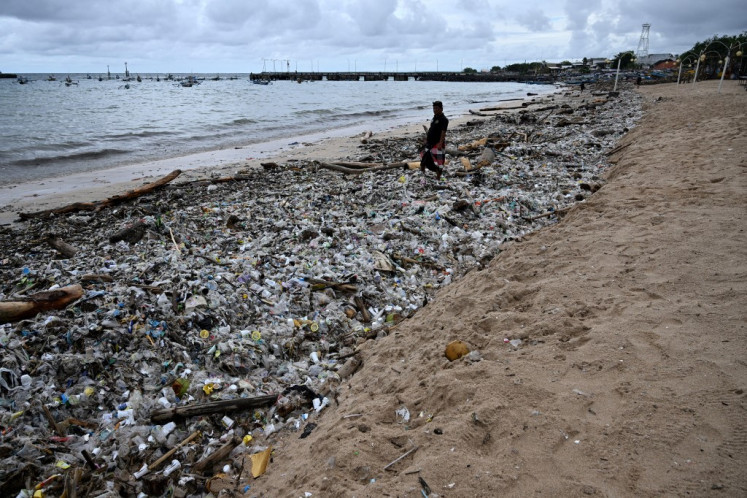China must not fear fiscal expansion
If China is to achieve its growth target for 2025, things must change.
Change text size
Gift Premium Articles
to Anyone
 Workers are seen on a scaffolding on Monday at the construction site of the Liuqing Railway in Anqing, in eastern China's Anhui province. (AFP/-)
Workers are seen on a scaffolding on Monday at the construction site of the Liuqing Railway in Anqing, in eastern China's Anhui province. (AFP/-)
I
n the years following the 2008 global financial crisis, bold stimulus measures enabled China to achieve a V-shaped recovery. Since then, however, the government has largely maintained neutral, even tight, macroeconomic policies. If China is to achieve its growth target for 2025, this must change. In fact, since September 2024, China has reoriented its macroeconomic stance substantially.
Two indicators typically dictate whether a government pursues expansionary or contractionary macroeconomic policies: The rate of economic growth (or the employment rate) and the inflation rate. Low growth calls for expansion (as long as inflation also remains low), and high inflation requires contraction (calibrated not to crush growth). By this standard, the case for expansionary policies in China today is clear. China’s Producer Price Index (PPI) inflation has been in negative territory for the better part of the past 13 years, and its annual average Consumer Price Index (CPI) inflation has also been very low, at just 0.2 percent in 2024. At the same time, China’s gross domestic product (GDP) growth rate has declined from 10.6 percent in 2010 to 5 percent last year.
So, why didn’t China’s government embrace macroeconomic expansion much earlier? First and foremost, it fears the deterioration of its fiscal position. At the end of 2023, China’s government debt-to-GDP ratio was approaching 61 percent, and its “augmented government debt-to-GDP ratio” (which includes debt held by local government financing vehicles) had reached nearly 117 percent. While these levels are much lower than those in most developed economies, they are high by Chinese standards, leaving the government reluctant to raise its budget deficit-to-GDP ratio above 3 percent.
Late last year, however, China’s Ministry of Finance did acknowledge that the central government has “considerable headroom” for issuing debt and increasing the fiscal deficit, marking a notable shift from the rhetoric of recent years. Moreover, at last September’s meeting, top Communist Party of China (CPC) officials pledged to strengthen the “counter-cyclical adjustment” of fiscal and monetary policies and to deploy “necessary fiscal spending” to meet growth targets.
For many in China, economic growth is no longer paramount. Instead, their top priority has lately been to eliminate overcapacity, an objective that some fear a new round of stimulus, with its requisite surge in investment, would undermine. But overcapacity is a structural issue, which should be eliminated primarily through market mechanisms, though some supportive policies can also be used.
In any case, GDP growth still matters. And, as it stands, achieving this year’s growth target of 5 percent will not be an easy task. After all, net export growth makes a significant contribution to growth, at 1.5 percentage points in 2024, and this is likely to take a major hit, given ongoing trade tensions with the United States.
To be sure, in the first quarter of 2025, according to the General Administration of Customs office, net exports grew at an annual rate of 50 percent. But the reason is both obvious and temporary: US importers were hoarding Chinese products ahead of expected tariff increases. Over the course of the year, net-export growth will likely decline sharply, shaving at least one percentage point off China’s GDP growth, according to some estimates.


















